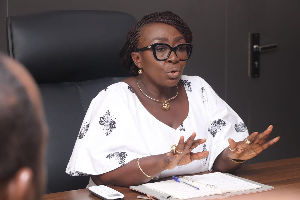Zimbabwe won’t solve its economic challenges via the gold-backed ZiG currency that it launched in April and has since had to devalue, the International Monetary Fund said.
“There’s a tendency to see the market rate, the exchange rate, as the cause of the problems countries face,” IMF Africa Department Director Abebe Selassie said in an interview. “In reality, the exchange rate is often the symptom and the root cause of exchange-rate weakness tends to be inflation.”
Zimbabwe’s ZiG, short for Zimbabwe Gold, is the southern African nation’s sixth attempt to stand up a stable local currency since 2009 after surging inflation — fanned by the government printing money to finance spending — scuppered previous efforts.
The ZiG was supposed to restore confidence through its backing by gold and hard currency reserves, plus a central bank pledge not to repeat the mistakes of the past.
But Zimbabweans are wary of trusting it after being burned before. The unit’s value on the unofficial market has steadily slipped, prompting the authorities last month to effectively devalue the ZiG by 43%, although its street value remains significantly weaker.
The ZiG on Friday was quoted at 27.68 per dollar on the official market, according to the central bank’s website. The unofficial rate ranges between 40 to 50 to the dollar, according to ZimPriceCheck.com. The greenback remains the main currency used in daily transactions.
The nation earlier reported a surge in monthly inflation to 37.2% in October from 5.8% a month earlier, fanned by the devaluation.
“Sadly, Zimbabwe has gone through these various cycles and the root cause is really the lack of confidence, the lack of faith in monetary and fiscal policy,” Selassie said. “It goes back to brass tacks and needing to address those root causes, and that’s the only source of closing the gap that we would be able to see.”
Business News of Friday, 25 October 2024
Source: bloomberg.com













